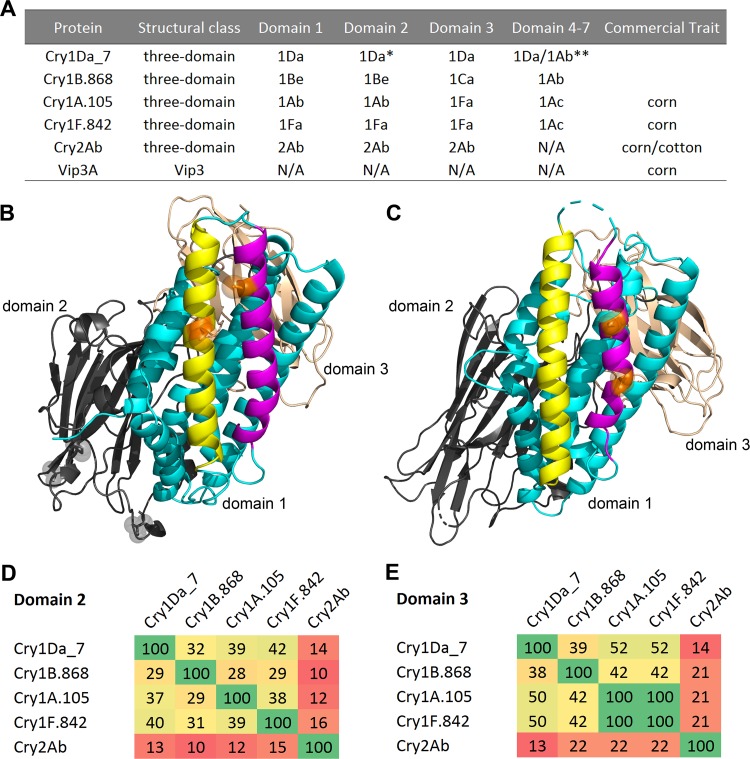FIG 1.
Sequence and structure relationship between Bt insecticidal proteins in current and next-generation above-ground traits. (A) Protein sequence information on the different NIPs, indicated by Bt toxin holotype nomenclature. The asterisk indicates the Cry1Da domain, in which substitutions were made to enhance CEW activity. Domains 4 to 7 of the three-domain Cry1 proteins are protoxin domains that are digested in vivo and thus are not part of the active ingredient; the Cry1Da_7 active core was appended to both Cry1Da and Cry1Ab protoxin domains and tested separately (double asterisk). Cry2Ab does not have these protoxin domains. Vip3A is of a different structural class whose sequence is different and structurally distinct from those of three-domain Cry proteins. N/A, not applicable. (B) Crystal structure of Cry1Da_7-DIP showing the three-domain architecture of domain 1 (cyan), domain 2 (gray), and domain 3 (light pink) in cartoon representation as well as helix 3 (yellow) and helix 4 (magenta) in domain 1. The key domain 1-disabling cysteine substitutions V108C and E128C are highlighted with orange sticks and semitransparent spheres corresponding to their side chain. The gray sticks and semitransparent spheres in domain 2 indicate the side chains of substitutions (S282V, Y316S, and I368P) that confer increased CEW specific activity. (C) Model of the three-dimensional architecture of Cry1B.868-DIP protein in cartoon representation with the above-described color scheme. The key domain 1-disabling substitutions A160N and N167D are highlighted with orange sticks and semitransparent spheres corresponding to their side chain. (D) Percent sequence identity between domains 2 of FAW-active insecticidal proteins based on comparative sequence analysis by multiple-sequence alignment (74). (E) Percent sequence identity between these proteins in domain 3.

